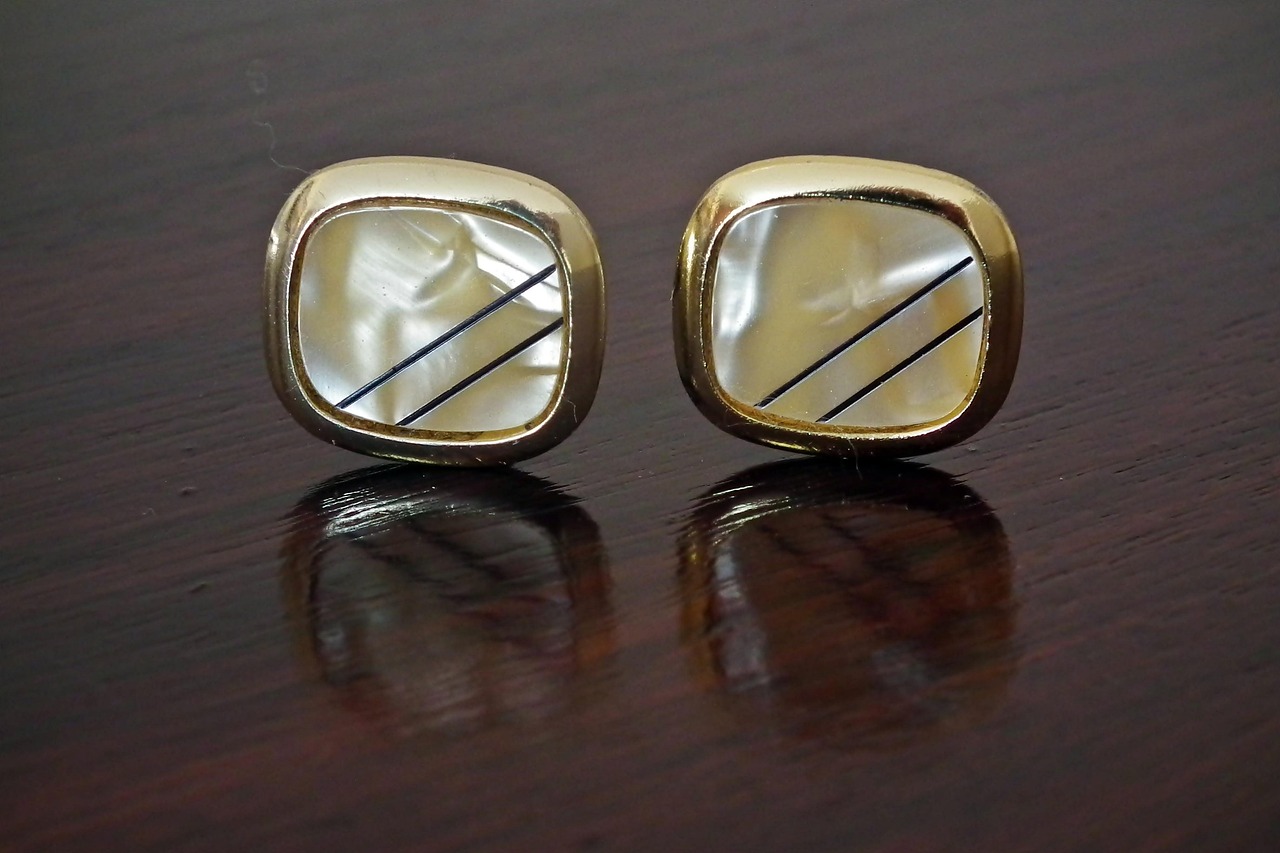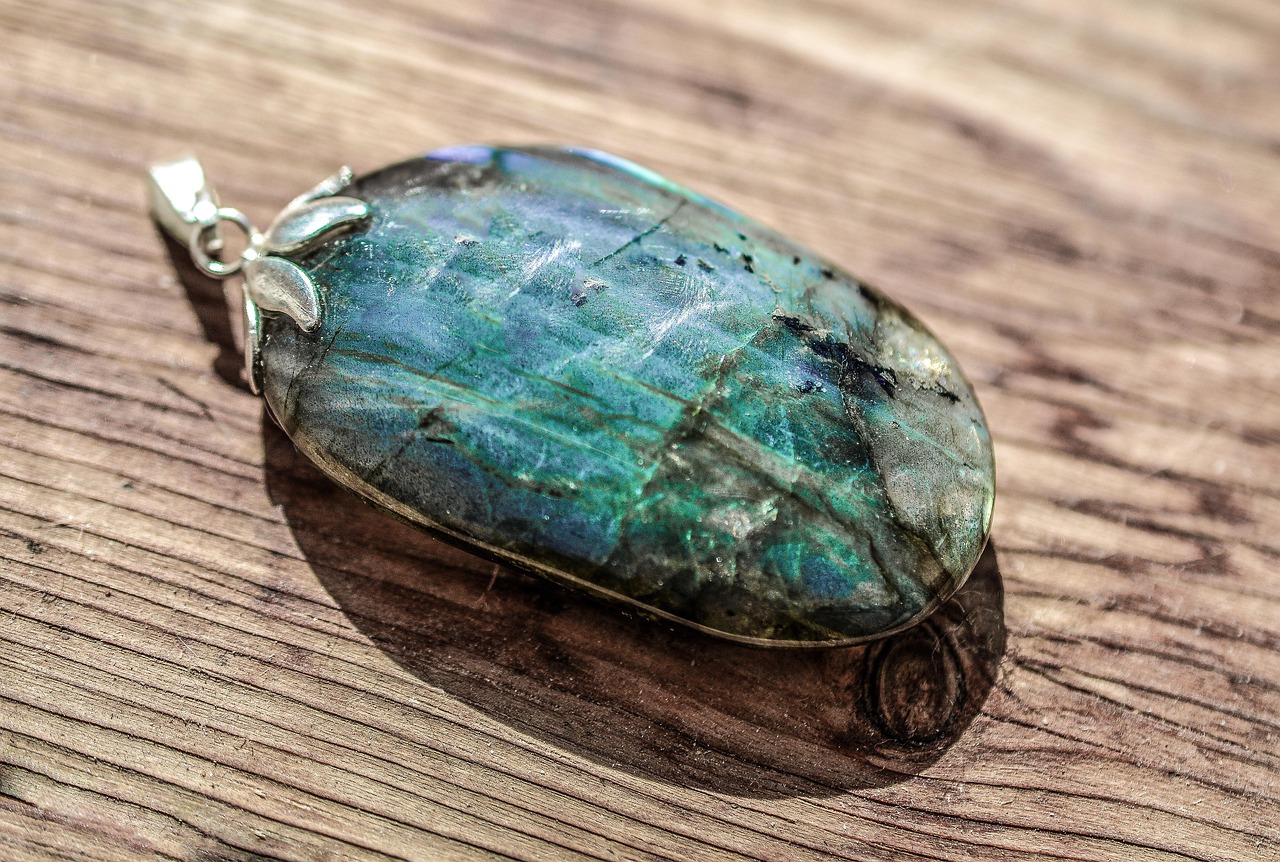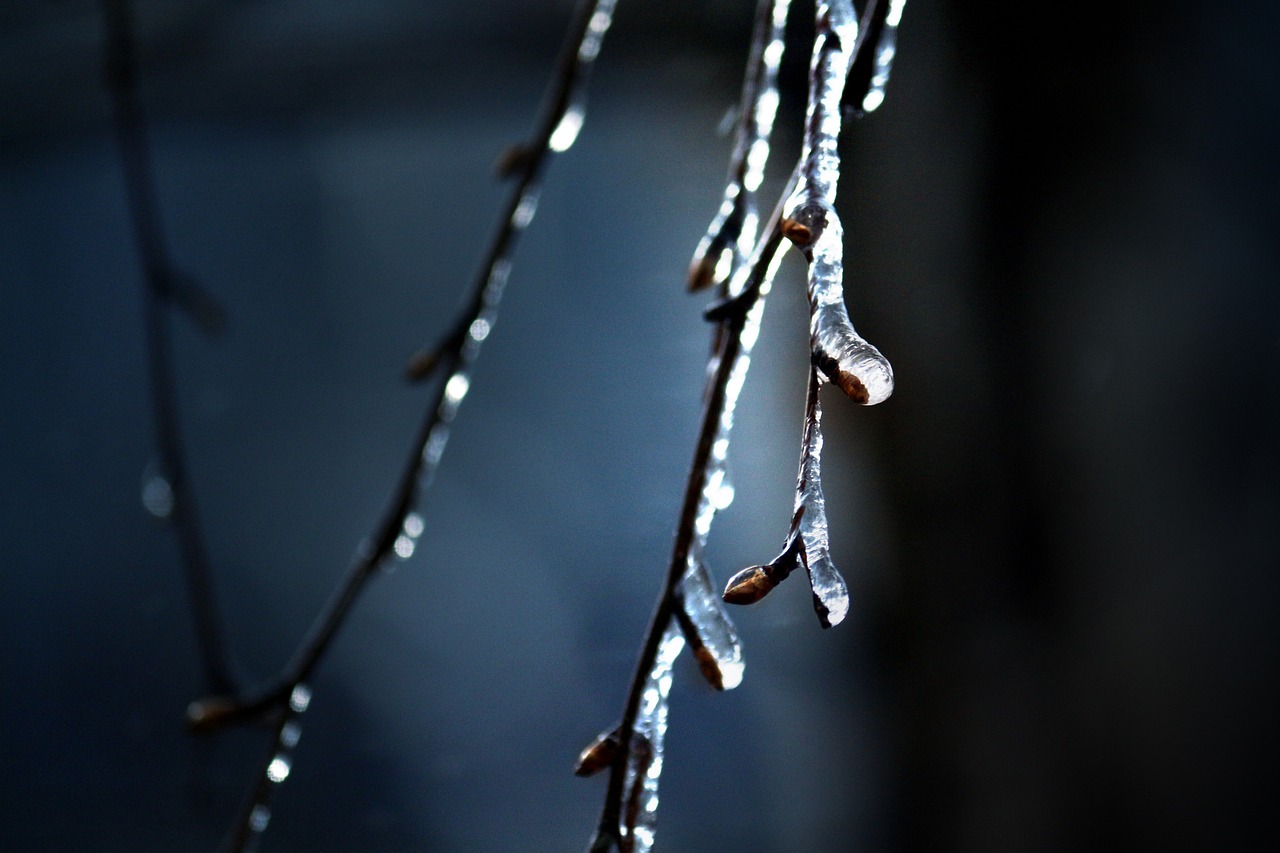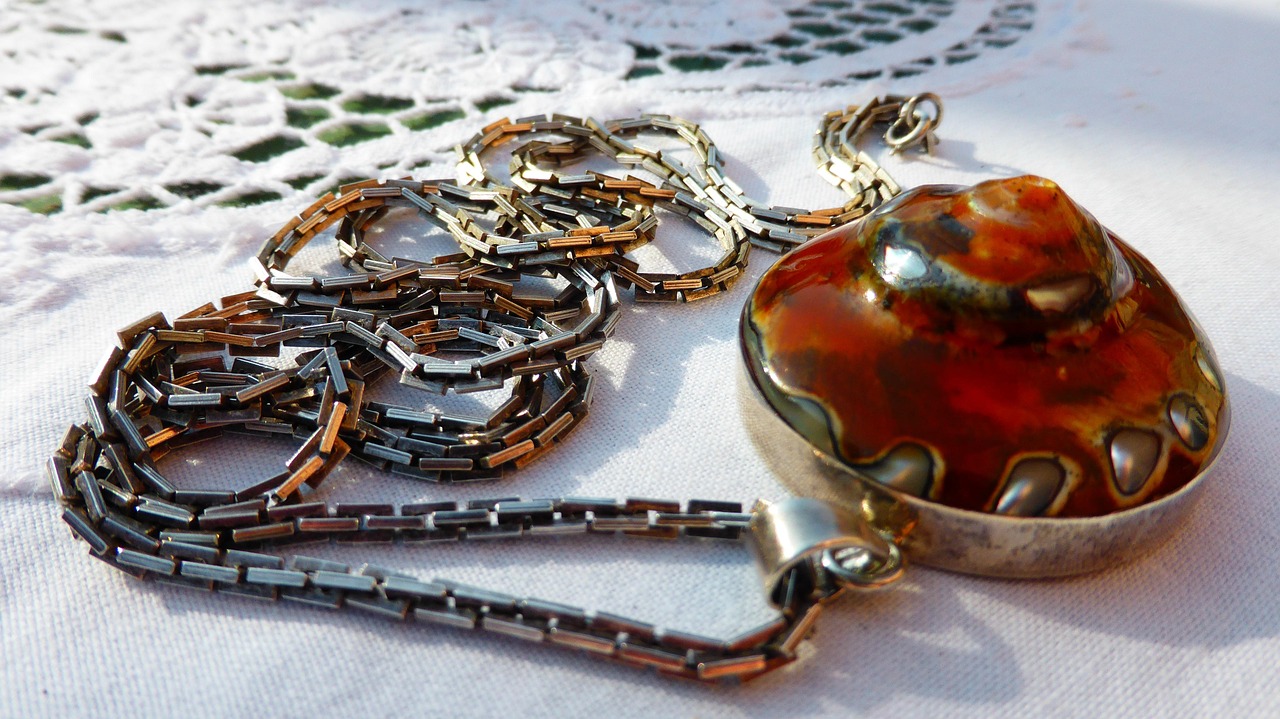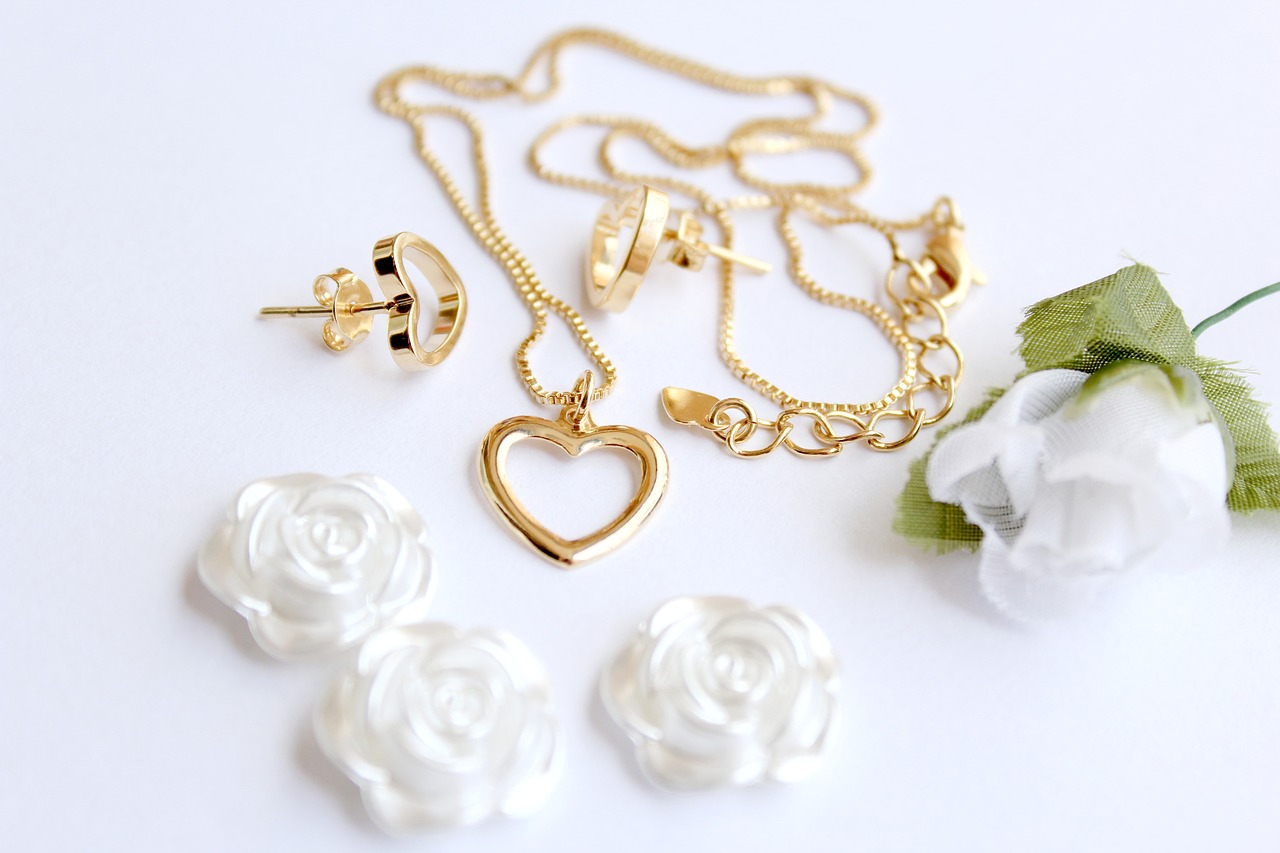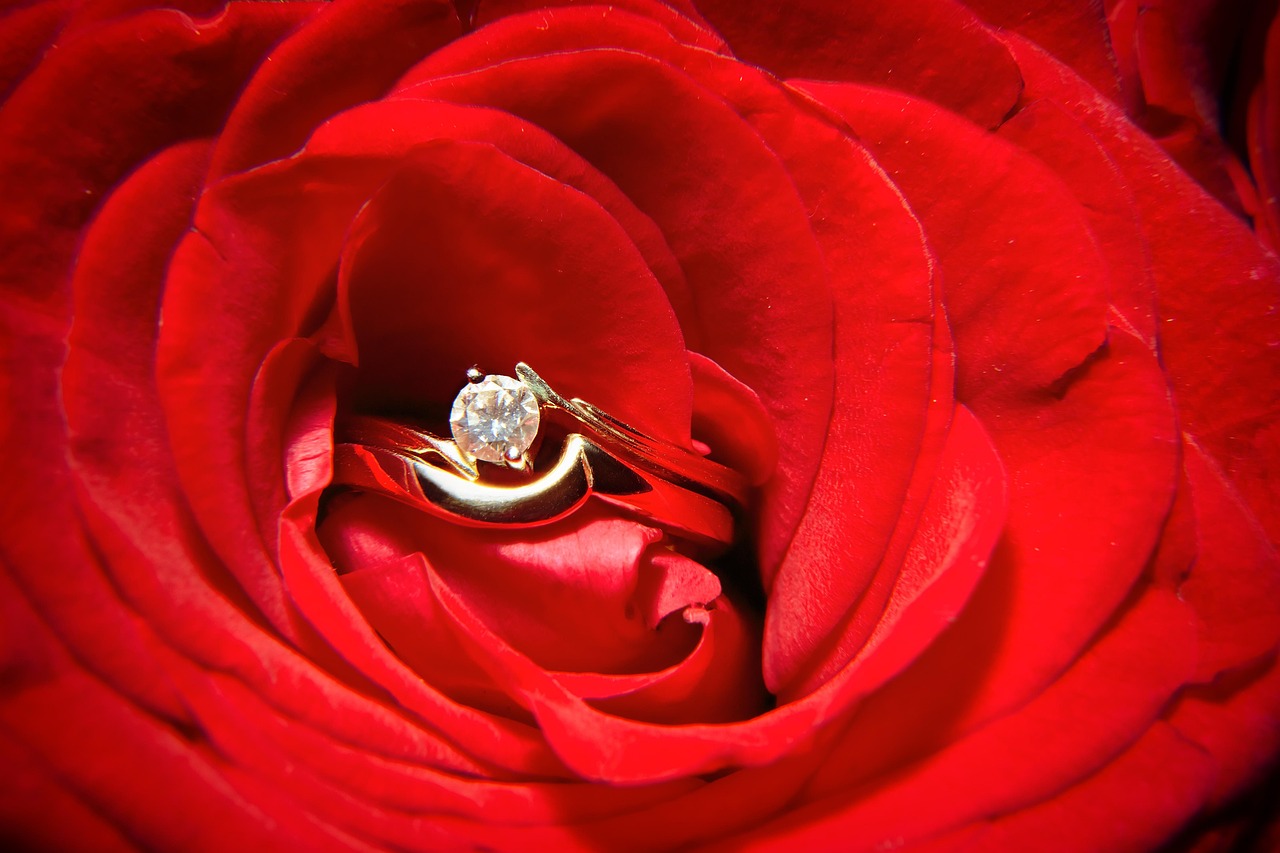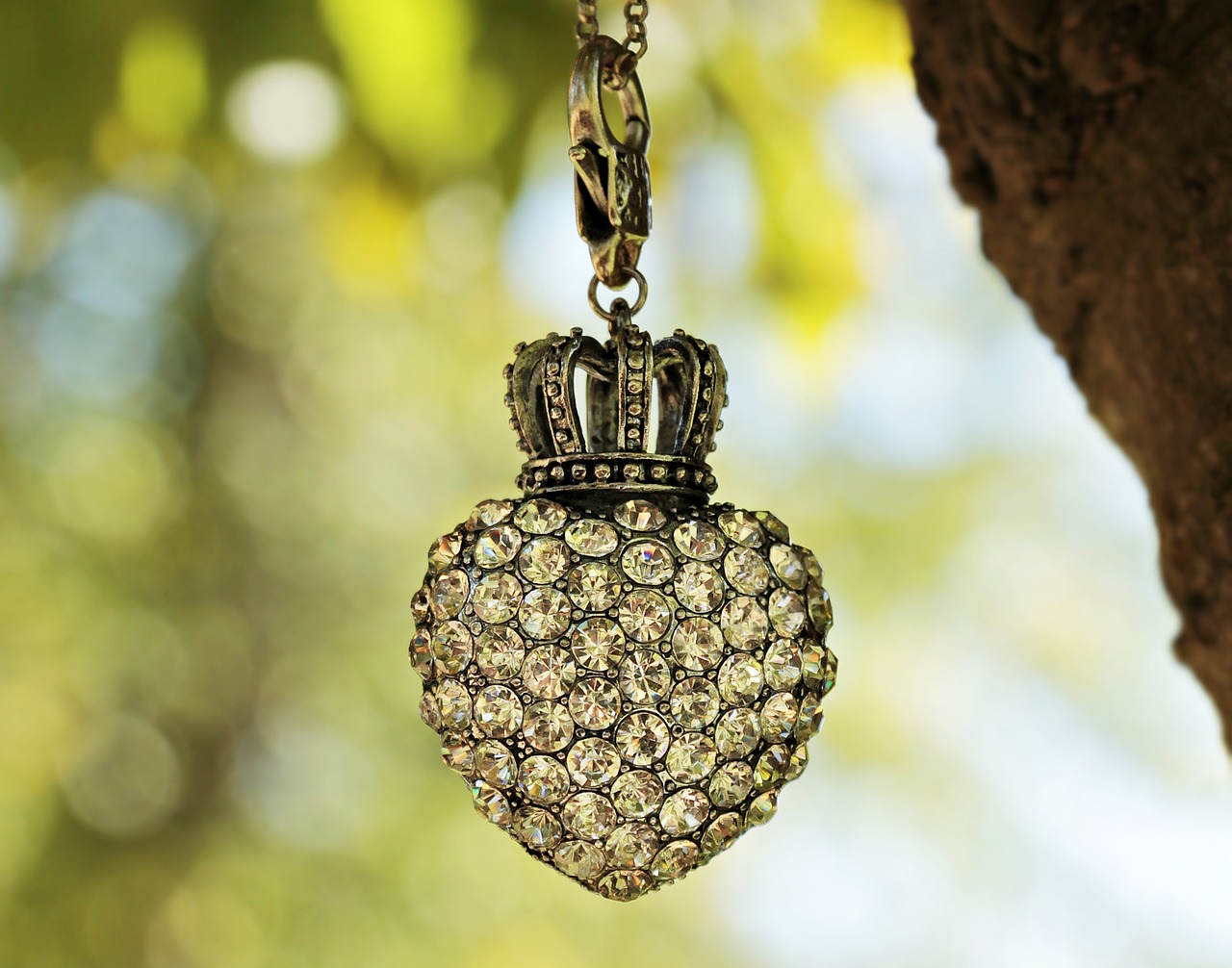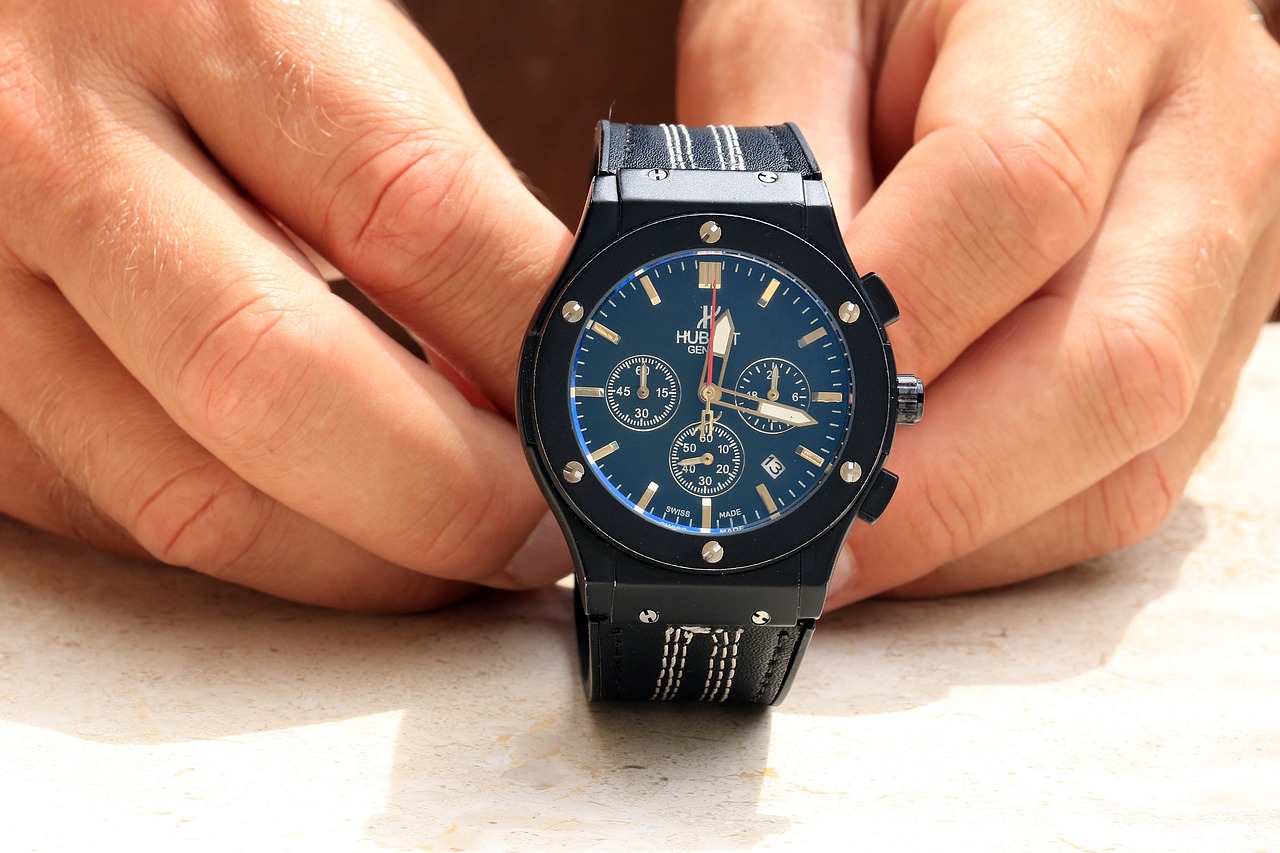This article explores effective and safe methods to clean gold jewelry, ensuring it retains its shine and integrity. Discover tips, techniques, and common mistakes to avoid while caring for your precious pieces.
Understanding the most effective cleaning methods is crucial for maintaining the beauty of your gold jewelry. Here, we discuss various techniques that can be safely employed at home to enhance the longevity of your items.
Yes, soap and water are often recommended for cleaning gold jewelry. This simple method effectively removes dirt and grime without damaging your pieces. To use this method correctly, follow these steps:
- Fill a bowl with warm water.
- Add a few drops of mild dish soap.
- Soak your jewelry for about 15-20 minutes.
Choosing the right soap is essential when cleaning gold jewelry. Mild dish soap or a gentle liquid soap is ideal, as it ensures your jewelry stays intact while being cleaned.
Harsh chemicals can damage the finish of gold jewelry. Substances like bleach or ammonia can cause discoloration and weaken the metal. Understanding the potential risks of using these substances can help you make informed choices when cleaning your pieces.
After cleaning, rinsing and drying your gold jewelry properly is crucial. Use lukewarm water to rinse off any soap residue, then gently pat your pieces dry with a soft cloth. Avoid using paper towels, as they can scratch the surface.
Using the right tools can enhance your cleaning process. Here, we discuss various tools that can aid in effectively cleaning gold jewelry without causing damage.
Yes, soft brushes can be beneficial for cleaning intricate designs on gold jewelry. A soft-bristled toothbrush can safely reach crevices and remove dirt without scratching your pieces.
Jewelry cleaning cloths are designed to clean and polish gold jewelry. These cloths often contain special cleaning agents that help maintain the shine of your pieces without causing harm. Gently rub your jewelry with the cloth to enhance its luster.
Avoiding common cleaning mistakes is essential for preserving your gold jewelry. Here are some pitfalls to steer clear of:
- Using abrasive materials that can scratch the surface.
- Over-cleaning, which can wear down the metal over time.
Ultrasonic cleaners can be effective but may not be suitable for all gold jewelry. If your pieces contain gemstones or are intricately designed, it’s best to consult a professional before using this method.
Regular cleaning can maintain the luster of gold jewelry, but over-cleaning can lead to wear. It is recommended to clean your jewelry every few months or as needed, depending on how often you wear it.
Proper storage is key to maintaining the quality of your gold jewelry. Here are effective storage solutions that protect your pieces from scratches and tarnishing:
Choosing the right materials for storing gold jewelry can prevent damage. Soft pouches, anti-tarnish cloths, and dedicated jewelry boxes are excellent options for optimal protection.
Organizing your jewelry collection not only keeps it tidy but also helps prevent damage. Use dividers or separate compartments to keep pieces from tangling or scratching each other.
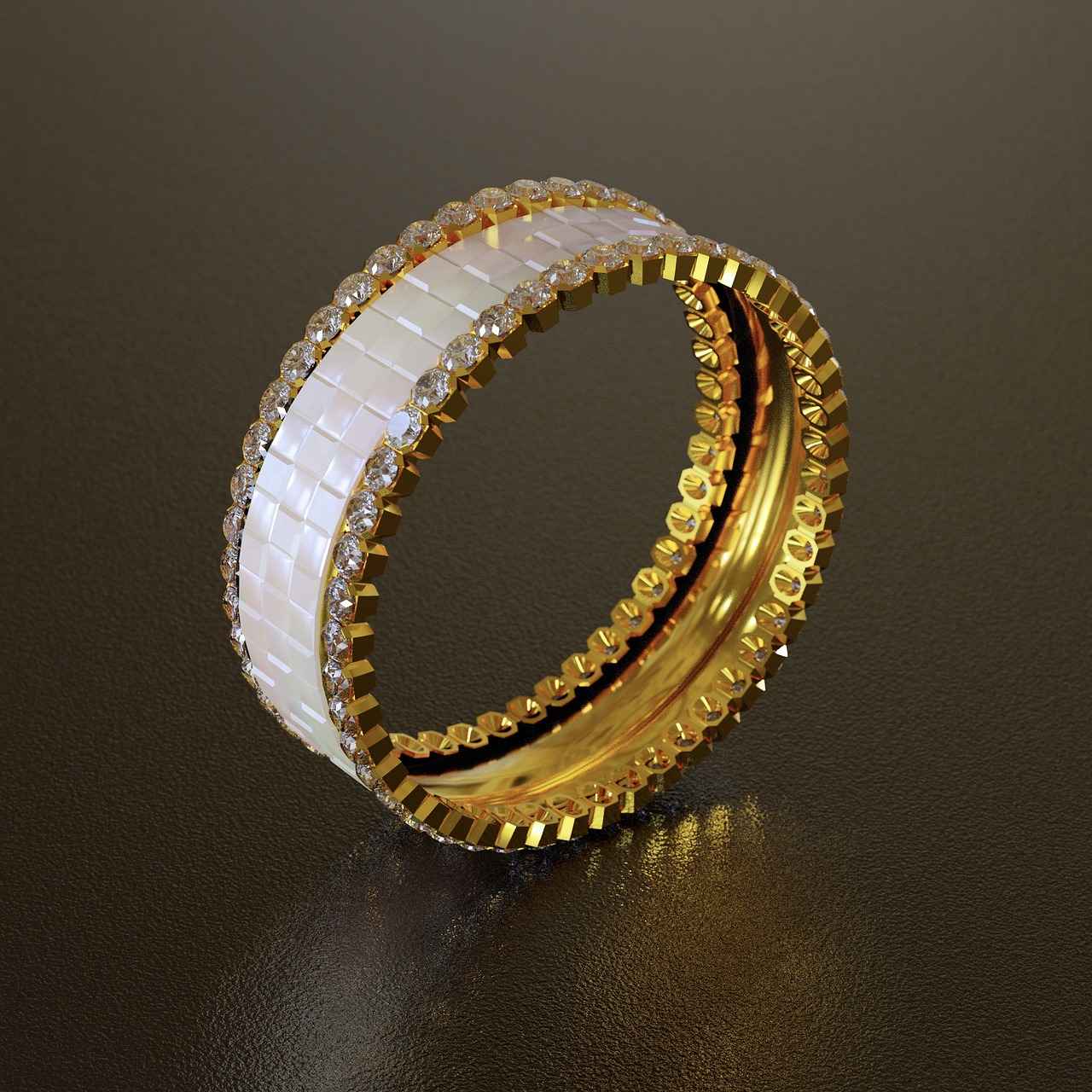
What Are the Best Methods for Cleaning Gold Jewelry?
When it comes to maintaining the beauty of your gold jewelry, understanding the best cleaning methods is essential. Gold jewelry can accumulate dirt, oils, and grime over time, diminishing its sparkle and appeal. Fortunately, there are several effective and safe techniques that you can employ at home to keep your precious pieces looking their best.
To ensure your gold jewelry retains its luster, consider the following cleaning methods:
- Soap and Water: This is one of the simplest and safest methods. Use warm water mixed with a few drops of mild dish soap to create a gentle cleaning solution.
- Soft Brush: A soft-bristled toothbrush can be used to gently scrub intricate designs and hard-to-reach areas without scratching the gold.
- Jewelry Cleaning Cloth: These cloths are specifically designed to polish gold jewelry and remove tarnish without damaging the surface.
Yes, soap and water are highly recommended for cleaning gold jewelry. This method is effective in removing dirt and oils while being gentle on the metal. Here’s how to do it:
1. Fill a bowl with warm water.2. Add a few drops of mild soap.3. Soak the jewelry for about 15-20 minutes.4. Gently scrub with a soft brush if necessary.5. Rinse thoroughly and dry with a soft cloth.
When cleaning gold jewelry, it’s important to choose a mild soap. Avoid using harsh detergents or soaps with added fragrances, as these can be abrasive and may cause damage. A gentle liquid soap or a mild dish soap is ideal.
Harsh chemicals can strip away the protective layers of gold jewelry, leading to dullness and potential damage. Substances like bleach or ammonia can be particularly harmful. Always opt for gentle cleaning solutions to maintain the integrity of your jewelry.
Preparing a cleaning solution is simple. Combine warm water with a few drops of mild soap. This creates a safe environment for your gold jewelry, allowing for effective cleaning without risk of damage.
After cleaning, it’s crucial to rinse your jewelry thoroughly to remove any soap residue. Use warm running water, and then gently dry your pieces with a soft, lint-free cloth. Avoid using paper towels, as they can scratch the surface.
Utilizing the right tools can enhance your cleaning routine:
- Soft Brushes: Ideal for intricate designs, soft brushes help clean without scratching.
- Jewelry Cleaning Cloth: These cloths are specially designed to polish and maintain the shine of gold.
Avoiding common cleaning mistakes is essential. Here are some pitfalls to steer clear of:
- Over-Cleaning: Frequent cleaning can wear down the surface. Clean only when necessary.
- Using Ultrasonic Cleaners: While effective, they may not be suitable for all gold pieces, particularly those with gemstones.
Proper storage is key to maintaining the quality of your gold jewelry. Store your pieces in a soft pouch or a jewelry box lined with fabric to prevent scratches. Avoid storing jewelry in damp areas to reduce the risk of tarnishing.
Using soft pouches and anti-tarnish cloths can provide optimal protection for your gold jewelry, preventing scratches and tarnishing.
Keeping your jewelry organized not only makes it easier to find but also helps prevent damage. Use compartments or separate pouches for different pieces to maintain their condition.
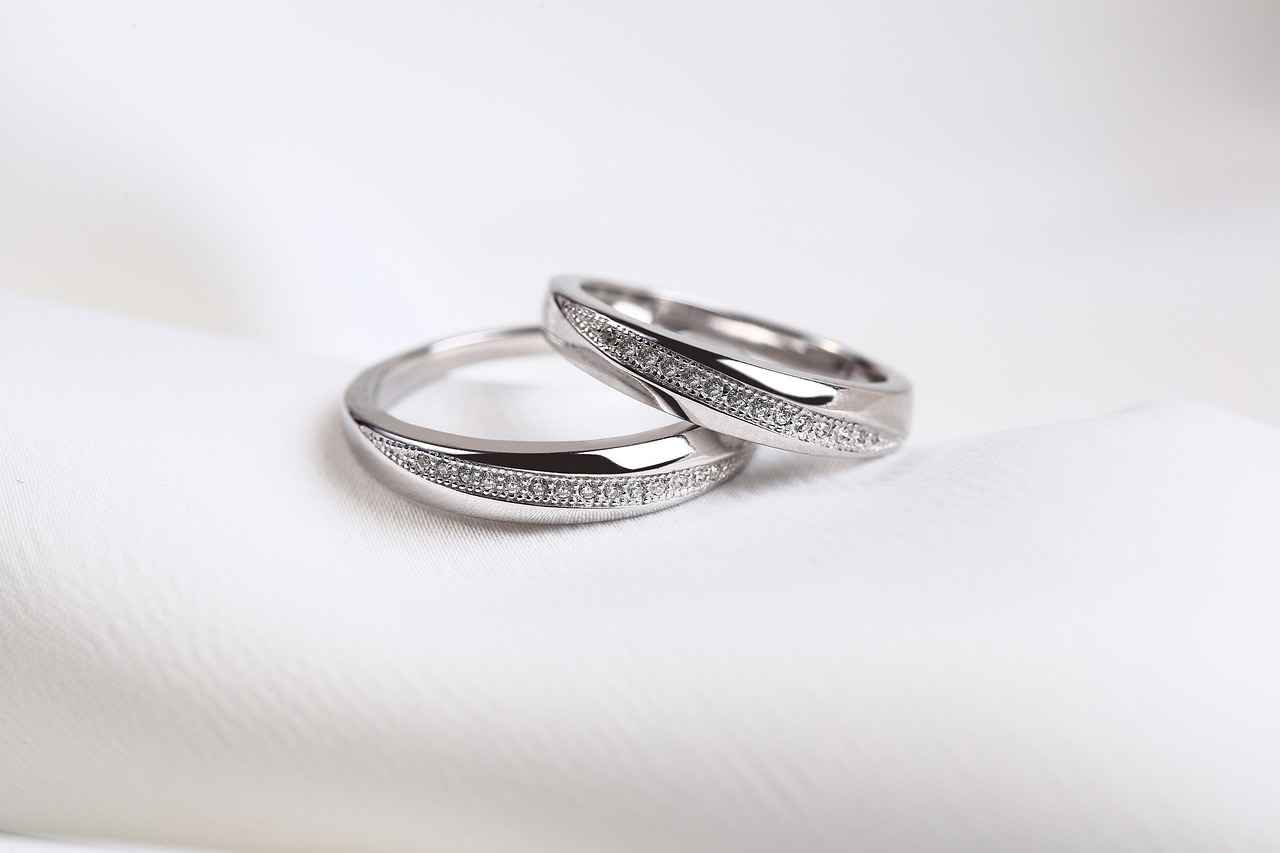
Can You Use Soap and Water to Clean Gold Jewelry?
When it comes to maintaining the beauty of your gold jewelry, cleaning is a crucial aspect that shouldn’t be overlooked. One of the simplest and most effective methods is using soap and water. This method not only helps in removing dirt and grime but also ensures that your precious pieces remain undamaged. In this section, we will explore the best practices for using soap and water to clean your gold jewelry safely and effectively.
Soap and water are often recommended by jewelers as a safe cleaning solution for gold jewelry. This method is gentle yet effective, making it suitable for various types of gold items, including rings, necklaces, and bracelets. The mildness of soap ensures that it does not react adversely with the gold, preserving its shine and integrity.
When selecting a soap for cleaning your gold jewelry, it’s important to choose mild and gentle options. Diluted dish soap or a gentle liquid soap is ideal. Avoid using soaps with added fragrances or harsh chemicals, as these can leave residues or cause damage to the jewelry’s finish.
Preparing the cleaning solution is straightforward. Follow these steps:
- Fill a bowl with warm water (not hot, as extreme temperatures can affect the metal).
- Add a few drops of your chosen mild soap to the water and stir gently to create a soapy solution.
This simple mixture creates a safe environment for cleaning your gold jewelry without risking any damage.
Once you have your cleaning solution ready, follow these steps for effective cleaning:
- Submerge your gold jewelry in the soapy water for a few minutes.
- Gently scrub the jewelry using a soft-bristled toothbrush to reach intricate designs.
- Rinse the jewelry under lukewarm running water to remove any soap residue.
Ensure that you do not use hot water, as it can damage certain types of gemstones that may be set in your jewelry.
After cleaning, it’s essential to rinse and dry your jewelry properly:
- Rinse thoroughly under lukewarm water to ensure all soap is washed away.
- Use a soft, lint-free cloth to gently pat the jewelry dry. Avoid rubbing, as this can cause scratches.
Make sure your jewelry is completely dry before storing it, as moisture can lead to tarnishing.
To ensure the longevity of your gold jewelry, be mindful of these common mistakes:
- Using harsh chemicals: Avoid cleaners that contain bleach or ammonia, as these can damage the metal.
- Over-scrubbing: Be gentle when cleaning; excessive force can scratch the surface.
- Neglecting to rinse: Failing to rinse off soap can leave a film that dulls the shine.
By following these guidelines, you can keep your gold jewelry looking as stunning as the day you bought it. The soap and water method is not only effective but also safe, allowing you to maintain your precious pieces with confidence.
What Type of Soap Should You Use?
When it comes to cleaning your gold jewelry, the type of soap you choose plays a crucial role in maintaining its beauty and integrity. Many people may not realize that using the wrong cleaning agents can lead to damage or tarnishing. Therefore, understanding the best options available is essential for preserving your treasured pieces.
Choosing the right soap is essential when cleaning gold jewelry. Mild dish soap or a gentle liquid soap is often recommended for this purpose. These soaps are formulated to remove dirt and grime without being abrasive or harsh on the delicate surfaces of your jewelry. Here are some reasons why these options are ideal:
- Non-Abrasive Formula: Mild soaps do not contain harsh chemicals or scrubbing agents that could scratch or dull the surface of your gold.
- Safe for All Gold Types: Whether your jewelry is solid gold or gold-plated, gentle soaps are safe for all types, ensuring that you won’t inadvertently damage your pieces.
- Effective Cleaning: These soaps effectively break down oils and dirt, allowing for a thorough clean without the need for excessive scrubbing.
To create a safe cleaning solution, mix a few drops of mild dish soap in a bowl of warm water. This combination will provide a gentle yet effective cleaning agent that can help restore the shine of your gold jewelry.
It’s important to understand the potential risks associated with using harsh chemicals. Many commercial cleaners contain strong acids or abrasive agents that can strip away the protective coatings on gold jewelry, leading to discoloration and damage. Always opt for natural or gentle solutions to ensure the longevity of your pieces.
Preparing the cleaning solution correctly is vital for effective cleaning. Here’s a simple method:
1. Fill a small bowl with warm water.2. Add a few drops of mild dish soap.3. Stir gently to mix.
This simple mixture will create a safe environment for your gold jewelry, allowing you to clean it without fear of damage.
Once your cleaning solution is ready, follow these steps:
- Soak: Place your gold jewelry in the solution and let it soak for about 15-20 minutes to loosen dirt and grime.
- Gently Clean: Use a soft cloth or a soft-bristled toothbrush to gently scrub the jewelry, focusing on intricate designs where dirt may accumulate.
- Rinse Thoroughly: After cleaning, rinse the jewelry under lukewarm running water to remove any soap residue.
- Dry Carefully: Pat the jewelry dry with a soft, lint-free cloth to prevent water spots.
By following these guidelines, you can ensure that your gold jewelry remains beautiful and untarnished for years to come. Remember, the right soap is just as important as the cleaning technique you use.
Why Avoid Harsh Chemicals?
When it comes to maintaining the beauty and longevity of your gold jewelry, understanding the risks associated with harsh chemicals is essential. Many people may not realize that everyday cleaning products can be detrimental to the finish and overall integrity of their precious pieces. This section delves into why it is crucial to avoid these substances and offers safer alternatives for cleaning your gold jewelry.
Harsh chemicals, such as bleach, ammonia, and certain abrasive cleaners, can cause significant damage to gold jewelry. These substances can lead to:
- Discoloration: Prolonged exposure can alter the hue of your gold, making it appear dull or tarnished.
- Surface Damage: Abrasive chemicals can scratch or erode the surface, compromising the jewelry’s finish.
- Weakening of Settings: Harsh cleaners can weaken the settings of gemstones, increasing the risk of losing precious stones.
Gold jewelry comes in various karats, and the higher the karat, the softer the gold. This means that lower karat gold may withstand some harsh chemicals better than higher karat gold, but it is still not immune to damage. For example:
- 10K Gold: More durable but still susceptible to discoloration and surface damage.
- 14K Gold: A popular choice that balances durability and beauty, yet can be significantly affected by strong chemicals.
- 18K Gold: Softer and more prone to scratching and tarnishing when exposed to harsh cleaners.
To keep your gold jewelry looking its best, consider using gentle cleaning methods. Here are some safe alternatives:
- Soap and Water: A mixture of mild dish soap and warm water is often the best choice for a gentle yet effective clean.
- Jewelry Cleaning Cloths: These specially designed cloths can polish your gold without the risk of damage.
- Soft Brushes: A soft-bristled brush can help clean intricate designs without scratching the surface.
When selecting cleaning products for your gold jewelry, keep these tips in mind:
- Read Labels: Always check product labels for warnings related to gold or jewelry.
- Opt for Non-Toxic Options: Look for eco-friendly cleaners that are gentle on both your jewelry and the environment.
- Test First: If you’re unsure about a product, test it on a small, inconspicuous area first.
In conclusion, while it may be tempting to use harsh chemicals for cleaning, the potential risks far outweigh the benefits. By opting for safer, gentler cleaning methods, you can ensure that your gold jewelry maintains its stunning appearance and remains a cherished part of your collection for years to come.
How to Prepare the Cleaning Solution?
Preparing the cleaning solution correctly is vital for effective cleaning. A simple mix of warm water and soap creates a safe environment for your gold jewelry. However, understanding the proportions and the type of soap to use is equally important to ensure that your precious pieces maintain their luster and integrity.
Gold jewelry can accumulate dirt, oils, and residues from everyday wear. Using the right cleaning solution not only helps in removing these impurities but also protects the finish of your jewelry. A well-prepared solution minimizes the risk of scratching or tarnishing your gold items.
- Warm Water: The temperature should be comfortable to touch but not boiling, as extreme heat can damage some types of jewelry.
- Mild Soap: Opt for a gentle liquid soap or mild dish soap. Avoid any soaps that contain harsh chemicals or fragrances.
To create an effective cleaning solution:
- Start with a bowl or container that is clean and free of any contaminants.
- Measure one tablespoon of mild soap and add it to two cups of warm water.
- Mix the solution gently to create bubbles, ensuring the soap is well dissolved.
This simple mixture is safe and effective for cleaning gold jewelry without causing any damage.
Once your cleaning solution is ready, follow these steps:
- Soaking: Place your gold jewelry in the solution and let it soak for about 15-20 minutes. This allows the soap to penetrate and loosen any dirt.
- Gentle Cleaning: After soaking, use a soft-bristled toothbrush to gently scrub the jewelry, focusing on intricate designs where dirt may accumulate.
- Rinse Thoroughly: After cleaning, rinse the jewelry under warm running water to remove any soap residue. Ensure the drain is covered to prevent losing any pieces.
While preparing your cleaning solution, be cautious of the following:
- Avoid using harsh chemicals or abrasive cleaners, as these can scratch or damage the gold.
- Do not use hot water, as extreme temperatures can cause some gemstones or settings to loosen or crack.
Regular cleaning is essential for maintaining the shine of your gold jewelry. Depending on how often you wear your pieces, aim for a gentle clean every few weeks. However, avoid over-cleaning, as this can wear down the finish over time.
By preparing the cleaning solution correctly and following these guidelines, you can ensure that your gold jewelry remains beautiful and well-maintained. Remember, a little care goes a long way in preserving the elegance of your cherished pieces.
How to Properly Rinse and Dry Gold Jewelry?
Cleaning gold jewelry is a delicate process that requires careful attention to detail, particularly when it comes to rinsing and drying. Proper rinsing ensures that all soap residue is eliminated, while safe drying helps maintain the integrity and shine of your precious pieces. This section delves into effective techniques to achieve these essential steps.
After cleaning your gold jewelry with soap and water, rinsing is a critical step. It removes any lingering soap that could lead to a dull appearance or irritation on the skin. Rinsing also ensures that no cleaning agents are trapped in intricate designs, which could compromise the jewelry’s aesthetic.
- Use Lukewarm Water: Always rinse your gold jewelry in lukewarm water. Hot water can cause thermal shock, while cold water may not effectively remove soap residue.
- Gentle Flow: Allow the water to flow gently over the jewelry. Avoid using high-pressure water, as this could dislodge any stones or delicate components.
- Check for Residue: After rinsing, visually inspect the jewelry to ensure that all soap is gone. If necessary, repeat the rinsing process.
Once your gold jewelry is rinsed, the next step is drying it properly. This is vital to prevent water spots and maintain its luster.
- Use a Soft Cloth: Pat the jewelry dry with a soft, lint-free cloth. Avoid rubbing, as this can scratch the surface.
- Air Dry: After patting, let the jewelry air dry completely. Place it on a soft surface, away from direct sunlight, which can cause fading or damage.
- Inspect Before Storing: Before putting your jewelry away, ensure that it is completely dry. Moisture can lead to tarnishing over time.
- Avoid Hot Water: As mentioned earlier, hot water can be detrimental. Always opt for lukewarm.
- Do Not Use Paper Towels: Paper towels can leave scratches on the surface of gold. Stick to soft cloths designed for jewelry care.
- Skip the Hair Dryer: While it may seem convenient, using a hair dryer can cause overheating, which might damage stones or settings.
By following these guidelines, you can ensure that your gold jewelry remains in pristine condition after cleaning. Rinsing and drying are not mere afterthoughts; they are essential components of jewelry care that help preserve the beauty and longevity of your cherished pieces.
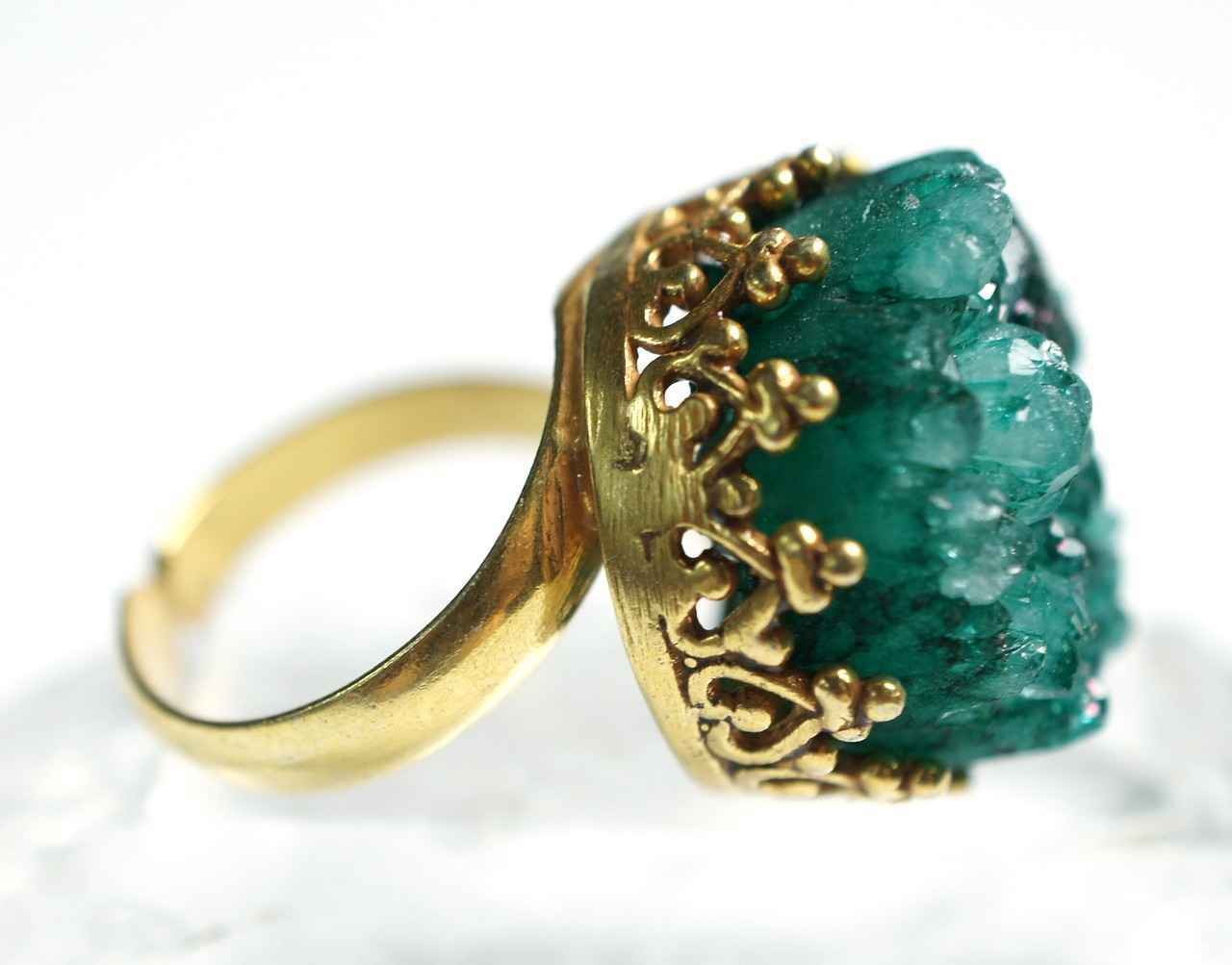
What Tools Can Help in Cleaning Gold Jewelry?
When it comes to maintaining the beauty and integrity of your gold jewelry, using the right tools is essential. The right tools not only enhance the cleaning process but also ensure that your precious pieces remain undamaged. In this section, we will explore various tools that can aid in effectively cleaning gold jewelry, providing you with the knowledge needed to keep your items sparkling.
- Soft Brushes: Soft-bristled brushes are ideal for cleaning intricate designs and hard-to-reach areas of your gold jewelry. They gently remove dirt and grime without scratching the surface. When using a soft brush, ensure that it is clean and dry to prevent any additional debris from causing damage.
- Jewelry Cleaning Cloths: These specialized cloths are designed to clean and polish gold jewelry effectively. They often contain gentle cleaning agents that can remove tarnish and restore shine. To use, simply rub the cloth over your jewelry, focusing on any dull areas.
- Microfiber Cloths: Similar to jewelry cleaning cloths, microfiber cloths are excellent for polishing gold jewelry. They are soft and non-abrasive, making them safe for all types of gold pieces. Regularly using a microfiber cloth can help maintain the luster of your jewelry.
- Soft Toothbrush: For pieces with intricate details, a soft toothbrush can be particularly useful. It can reach into crevices and grooves, effectively loosening dirt without causing scratches. Make sure to use a clean toothbrush to avoid transferring any unwanted substances.
- Basin or Bowl: When cleaning your gold jewelry, it’s important to have a designated basin or bowl to hold the cleaning solution. This prevents any potential damage from the jewelry coming into contact with hard surfaces. A soft, padded basin is ideal.
- Ultrasonic Cleaners: While ultrasonic cleaners can be effective for cleaning jewelry, they may not be suitable for all gold pieces, especially those with delicate gemstones. If you choose to use an ultrasonic cleaner, ensure that your jewelry is safe for this method by consulting with a professional.
Yes, soft brushes are safe for cleaning gold jewelry. They are specifically designed to be gentle on delicate surfaces while effectively removing dirt. When using a soft brush, be sure to apply light pressure to avoid scratching the gold. It’s also advisable to clean your brushes regularly to prevent any buildup of dirt or grime that could transfer to your jewelry.
Absolutely! Jewelry cleaning cloths are an excellent choice for maintaining the shine of your gold jewelry. These cloths are often treated with cleaning agents that help remove tarnish and restore luster. To use, simply wipe your jewelry gently with the cloth, ensuring that you cover all areas. This method is quick, easy, and highly effective for regular maintenance.
- Using Abrasive Materials: Avoid using rough or abrasive materials that can scratch the surface of your gold jewelry.
- Neglecting to Rinse: After cleaning, always rinse your jewelry thoroughly to remove any soap residue that could lead to tarnishing.
- Over-Cleaning: Cleaning your jewelry too frequently can wear down the finish over time. It’s best to clean only when necessary.
By utilizing the right tools and following best practices, you can ensure that your gold jewelry remains beautiful and well-maintained for years to come. Remember to treat your pieces with care and always opt for gentle cleaning methods.
Are Soft Brushes Safe for Gold Jewelry?
Gold jewelry is cherished for its beauty and elegance, but maintaining its pristine condition can be challenging, especially when it comes to cleaning intricate designs. One effective tool for this task is a soft brush. In this section, we will explore the benefits of using soft brushes for cleaning gold jewelry and provide essential tips for safe usage.
Soft brushes are specifically designed to gently remove dirt and grime without scratching the surface of your gold jewelry. Their fine bristles can reach into intricate designs and crevices that other cleaning tools might miss. This makes them an excellent choice for maintaining the luster of your precious pieces.
To ensure that you clean your gold jewelry effectively while avoiding damage, follow these guidelines:
- Choose the Right Brush: Opt for a brush with soft bristles, such as a baby toothbrush or a dedicated jewelry brush. Avoid using hard bristles that can scratch the gold.
- Use a Gentle Touch: When brushing, apply light pressure. The goal is to lift dirt, not to scrub aggressively. This will help prevent any potential scratching.
- Work in Sections: Clean one small area at a time, focusing on detailed sections of the jewelry. This method ensures thorough cleaning without overwhelming the piece.
- Combine with a Cleaning Solution: For best results, use a mixture of warm water and mild soap. Dip the brush into the solution before cleaning to enhance its effectiveness.
While soft brushes are beneficial, there are some common mistakes to avoid:
- Avoid Harsh Chemicals: Never use abrasive cleaners or harsh chemicals with your soft brush. These substances can damage the gold’s finish.
- Don’t Overdo It: Frequent brushing can wear down the gold over time. Limit the use of brushes to occasional cleanings.
- Skip the Brush on Delicate Stones: If your gold jewelry includes gemstones, be cautious. Some stones may be sensitive to brushing, so it’s better to clean those areas with a soft cloth instead.
Yes, soft brushes can help restore the shine to dull gold jewelry. By gently removing accumulated dirt and oils, you can reveal the original luster of your pieces. For added shine, consider following up with a jewelry polishing cloth designed for gold.
Using soft brushes is a safe and effective way to clean gold jewelry, especially for pieces with intricate designs. By following the tips outlined above, you can maintain the beauty of your jewelry without risking damage. Remember to choose the right tools and techniques to ensure your precious items remain in excellent condition.
Can You Use a Jewelry Cleaning Cloth?
Jewelry cleaning cloths are essential tools for maintaining the beauty and shine of your gold jewelry. These specially designed cloths not only clean but also polish your precious pieces, ensuring they look their best. In this section, we will explore the correct way to use these cloths to avoid any potential damage while enhancing the luster of your jewelry.
A jewelry cleaning cloth is typically made from soft, non-abrasive materials that are safe for delicate surfaces. These cloths are often infused with cleaning agents that help lift dirt and grime without scratching the gold. Using a cleaning cloth can be an effective way to maintain your jewelry’s appearance between deep cleanings.
To achieve the best results when using a jewelry cleaning cloth, follow these simple steps:
- Start with a Dry Cloth: Ensure the cloth is dry before use. This helps prevent any moisture from damaging the jewelry.
- Gently Wipe the Surface: Use gentle, circular motions to wipe down the jewelry. This method is effective in removing smudges and fingerprints.
- Focus on Intricate Areas: For pieces with intricate designs, use the edge of the cloth to reach small crevices.
- Inspect the Jewelry: After cleaning, inspect your jewelry for any remaining spots or tarnish. Repeat the process if necessary.
While jewelry cleaning cloths are generally safe for most gold jewelry, it is important to consider the following:
- Gold-Plated vs. Solid Gold: If your jewelry is gold-plated, be cautious. Overuse of the cloth can wear away the gold layer.
- Stones and Settings: If your gold jewelry has gemstones or delicate settings, ensure that the cloth does not snag or scratch these components.
Regular cleaning with a jewelry cleaning cloth can prevent the buildup of dirt and oils, which can dull the shine of your gold jewelry. By incorporating this simple practice into your jewelry care routine, you can maintain the brilliance of your pieces for years to come.
When using a jewelry cleaning cloth, there are a few common mistakes to avoid:
- Using Excessive Force: Applying too much pressure can scratch the surface of your jewelry, especially if it has intricate designs.
- Neglecting to Clean the Cloth: Over time, the cloth can accumulate dirt and grime. Regularly wash or replace it to ensure optimal cleaning results.
- Using on Non-Jewelry Items: Avoid using the cloth on surfaces that are not meant for jewelry, as this can transfer dirt back onto your pieces.
Quality jewelry cleaning cloths can be found at jewelry stores, online retailers, and specialty cleaning supply shops. Look for cloths specifically labeled for gold jewelry to ensure the best care for your pieces.
In conclusion, utilizing a jewelry cleaning cloth correctly can significantly enhance the longevity and appearance of your gold jewelry. By following the tips and guidelines provided, you can enjoy your beautiful pieces without the worry of damaging them.
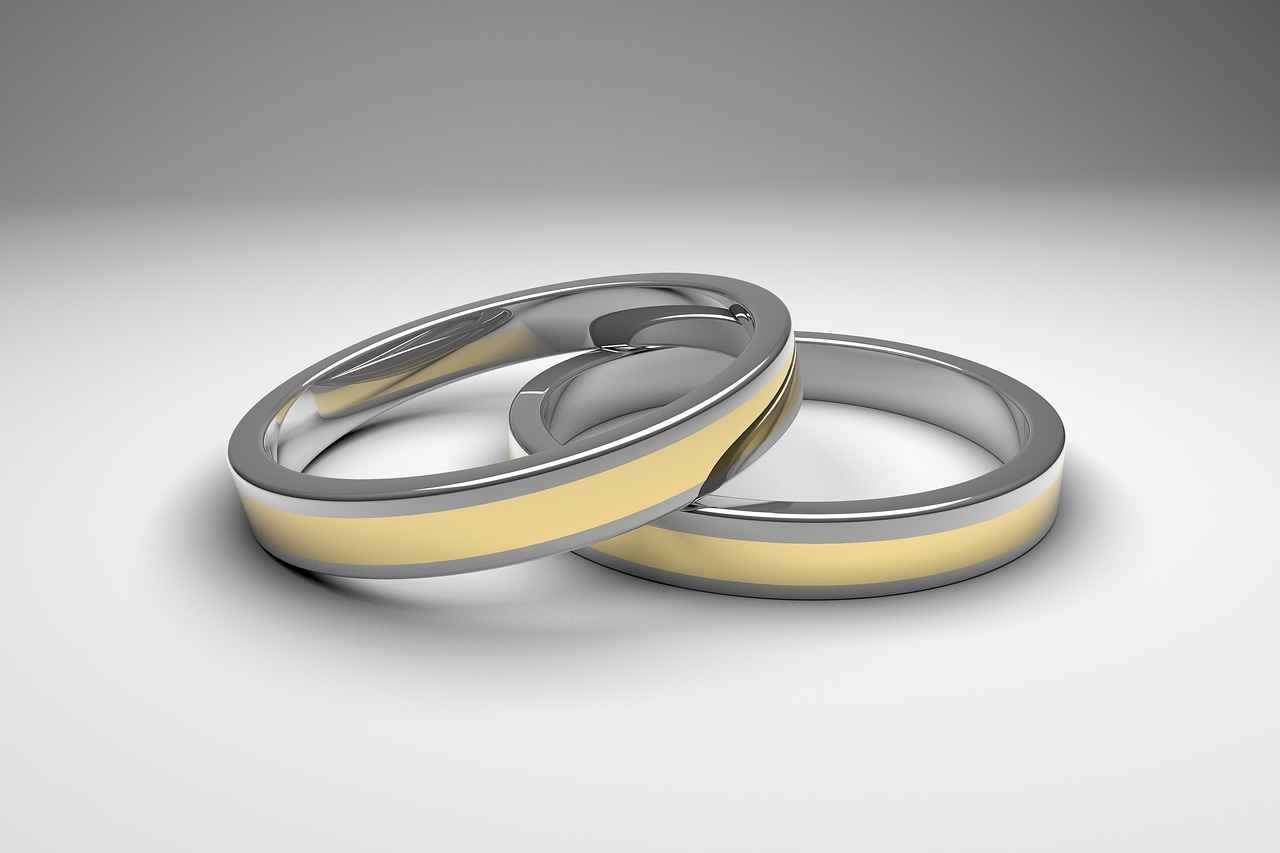
What Common Mistakes Should You Avoid When Cleaning Gold Jewelry?
Cleaning gold jewelry can be a delicate process, and avoiding common cleaning mistakes is essential for preserving the beauty and integrity of your precious pieces. Many people unknowingly use methods that can lead to damage, dullness, or even discoloration. In this section, we will highlight some of the most frequent pitfalls and provide guidance on how to steer clear of them for optimal care.
- Using Harsh Chemicals: One of the biggest mistakes is opting for harsh cleaning agents. Products containing bleach, ammonia, or other strong chemicals can tarnish or damage the finish of gold jewelry. Always choose gentle, non-abrasive cleaners.
- Neglecting to Rinse Thoroughly: After cleaning, failing to rinse your jewelry properly can leave soap residue, which may lead to irritation on the skin or attract dirt. Make sure to rinse with warm water until all soap is removed.
- Over-Cleaning: While regular cleaning is important, over-cleaning can wear down the gold and remove its protective layer. It’s advisable to clean your jewelry only when necessary, such as when it becomes visibly dirty.
- Using the Wrong Tools: Using abrasive materials like steel wool or rough sponges can scratch the surface of your gold jewelry. Instead, opt for soft cloths or brushes specifically designed for delicate items.
- Ignoring Intricate Designs: Jewelry with intricate designs can trap dirt and grime. Avoid using excessive force when cleaning these pieces, as it can lead to damage. Instead, a soft brush can help reach those hard-to-clean areas gently.
- Not Checking for Loose Stones: Before cleaning, always check for loose stones or settings. If a stone is not secure, cleaning can dislodge it further. It’s wise to have any repairs done before attempting to clean.
To ensure your gold jewelry remains in pristine condition, follow these safe cleaning methods:
- Use Mild Soap and Water: A mixture of warm water and a few drops of mild dish soap is usually sufficient for cleaning gold jewelry. Soak the pieces for a few minutes, then gently scrub with a soft brush.
- Dry Properly: After rinsing, dry your jewelry with a soft, lint-free cloth. Avoid air-drying, as this can lead to water spots.
- Store Wisely: After cleaning, store your gold jewelry in a soft pouch or a separate compartment in your jewelry box to prevent scratches and tarnishing.
While ultrasonic cleaners can be effective for some jewelry, they are not always safe for gold. Here are some considerations:
- Check Compatibility: Not all gold jewelry can withstand ultrasonic cleaning. Pieces with gemstones, pearls, or delicate settings may be damaged.
- Follow Instructions: If you choose to use an ultrasonic cleaner, always follow the manufacturer’s instructions to avoid overexposure or damage.
By being aware of these common mistakes and following safe cleaning practices, you can maintain the beauty and longevity of your gold jewelry. Remember, when in doubt, consult a professional jeweler for advice on the best cleaning methods for your specific pieces.
Is It Safe to Use Ultrasonic Cleaners?
When it comes to maintaining the beauty of your gold jewelry, many people wonder about the effectiveness of various cleaning methods. One such method that has gained popularity is the use of ultrasonic cleaners. While these devices can indeed be effective in removing dirt and grime, it is essential to understand that they may not be suitable for all types of gold jewelry.
Ultrasonic cleaners are devices that use high-frequency sound waves to create tiny bubbles in a liquid cleaning solution. These bubbles implode, producing a scrubbing action that can remove dirt and debris from surfaces, including intricate designs in jewelry. However, the effectiveness of ultrasonic cleaners can vary based on several factors.
It is crucial to recognize that not all gold jewelry is created equal. Some pieces may contain delicate gemstones or other materials that could be damaged by the vibrations produced by an ultrasonic cleaner. For instance:
- Jewelry with Soft Stones: Items featuring softer stones like opals, pearls, or turquoise should be kept away from ultrasonic cleaners, as the vibrations can crack or damage them.
- Loose Settings: If your jewelry has any loose stones or settings, the ultrasonic cleaner may exacerbate these issues, causing stones to dislodge.
- Antique or Vintage Jewelry: Older pieces may have delicate components or finishes that could be adversely affected by the ultrasonic process.
While ultrasonic cleaners can provide a thorough cleaning, they also pose certain risks. Understanding these risks is vital for preserving the integrity of your jewelry:
- Potential Damage: The intense vibrations can lead to scratches or even structural damage over time, especially to softer materials.
- Finish Deterioration: The cleaning process may dull the shine of your gold jewelry, particularly if it has a special finish or texture.
- Residue Issues: If not used correctly, ultrasonic cleaners can leave behind cleaning solution residue, which can be harmful to your jewelry.
If you decide to use an ultrasonic cleaner, follow these guidelines to minimize risks:
- Check Manufacturer Guidelines: Always refer to the manufacturer’s instructions for your specific jewelry piece.
- Use the Right Cleaning Solution: Ensure you are using a cleaning solution that is safe for gold and compatible with your ultrasonic cleaner.
- Limit Cleaning Time: Avoid prolonged exposure to ultrasonic cleaning; short bursts are often more effective and safer.
If you are unsure about the suitability of ultrasonic cleaners for your gold jewelry, consider alternative cleaning methods:
- Soap and Water: A gentle mixture of mild dish soap and warm water can effectively clean your jewelry without the risks associated with ultrasonic cleaners.
- Soft Brushes: Using a soft-bristled brush can help remove dirt from intricate designs without causing scratches.
- Jewelry Cleaning Cloths: Specialized cloths can polish gold jewelry and remove light tarnish safely.
In summary, while ultrasonic cleaners can be effective for cleaning gold jewelry, they are not universally safe for all pieces. Understanding the specific needs of your jewelry and opting for safer cleaning methods when in doubt can help maintain its beauty and longevity.
Should You Clean Gold Jewelry Regularly?
Gold jewelry is a cherished possession for many, often symbolizing love, commitment, or personal style. To keep these precious items looking their best, regular cleaning is essential. However, it is equally important to understand that over-cleaning can lead to wear and tear, diminishing the beauty of your jewelry over time. In this section, we will explore the recommended frequency for cleaning your gold jewelry, ensuring it retains its luster and integrity.
When it comes to cleaning gold jewelry, the frequency of cleaning can vary based on several factors, including how often you wear the pieces and their exposure to elements such as sweat, lotions, and perfumes. As a general guideline, it is advisable to clean your gold jewelry every two to three weeks if you wear it daily. For pieces that are worn less frequently, a thorough cleaning every one to three months should suffice.
Regular cleaning helps to remove dirt, oils, and tarnish that can accumulate over time. This not only maintains the shine of your gold jewelry but also prevents potential buildup that could lead to more significant damage. Additionally, regular maintenance allows you to inspect your jewelry for any signs of wear, such as loose stones or weakened clasps, ensuring that your pieces remain safe and secure.
While keeping your jewelry clean is important, over-cleaning can be detrimental. Frequent use of abrasive cleaners or excessive scrubbing can wear down the surface of your gold, leading to scratches and a loss of luster. Moreover, using harsh chemicals can damage the finish and alter the color of the gold, making it appear dull and lifeless. To avoid these issues, it is crucial to adopt a balanced cleaning routine.
Creating a cleaning schedule for your gold jewelry can help you stay organized. Here are some practical tips:
- Daily Care: Wipe your jewelry with a soft cloth after wearing it to remove oils and dirt.
- Bi-Weekly Cleaning: Use a mild soap and water solution to clean your jewelry, ensuring you rinse thoroughly.
- Monthly Inspection: Check for any signs of damage or wear, and consider a professional cleaning for intricate pieces.
For regular cleaning, a simple solution of warm water and a few drops of mild dish soap is often sufficient. Avoid using harsh chemicals or abrasive materials. Instead, opt for a soft brush or a microfiber cloth to gently scrub the jewelry, ensuring that you reach any intricate designs without causing damage.
Proper storage is just as important as regular cleaning. Store your gold jewelry in a soft pouch or a jewelry box lined with fabric to prevent scratches. Avoid storing multiple pieces together, as they can rub against each other and cause damage. Consider using anti-tarnish cloths or pouches to further protect your jewelry from tarnishing.
In conclusion, maintaining the beauty of your gold jewelry requires a careful balance of regular cleaning and mindful care. By establishing a routine that includes gentle cleaning methods and proper storage, you can ensure that your treasured pieces remain as stunning as the day you acquired them.

How to Store Gold Jewelry to Prevent Damage?
Proper storage is essential for maintaining the quality and longevity of your gold jewelry. By implementing effective storage solutions, you can protect your cherished pieces from scratches, tarnishing, and other forms of damage. In this section, we will explore various storage methods and materials that ensure your gold jewelry remains in pristine condition.
When it comes to storing gold jewelry, the right solutions can make all the difference. Here are some effective methods:
- Jewelry Boxes: Invest in a quality jewelry box with compartments to keep your pieces separated. This helps prevent them from tangling and scratching against each other.
- Soft Pouches: Use soft fabric pouches for individual pieces. These pouches can be made from materials like velvet or silk, which provide a protective layer against scratches.
- Anti-Tarnish Cloths: Consider using anti-tarnish cloths or bags that are specifically designed to inhibit tarnishing. These materials can help keep your gold jewelry looking shiny and new.
Organizing your jewelry collection not only makes it easier to find your favorite pieces but also helps prevent damage. Here are some practical tips:
- Sort by Type: Group similar items together, such as rings, necklaces, and bracelets. This method simplifies the process of locating specific pieces.
- Use Dividers: If your jewelry box doesn’t have built-in dividers, consider adding them. This will keep your pieces separated and reduce the risk of scratches.
- Regular Inventory: Periodically check your collection to ensure everything is in good condition. This also allows you to manage any pieces that may need cleaning or repairs.
Direct sunlight can cause damage to your gold jewelry over time. Exposure to UV rays can lead to discoloration and tarnishing. Always store your pieces in a cool, dark place to maintain their integrity.
Humidity can accelerate tarnishing, especially for gold jewelry with gemstones or other materials. Here are some strategies to combat humidity:
- Silica Gel Packs: Place silica gel packs in your jewelry box to absorb excess moisture. These packs are inexpensive and can significantly reduce humidity levels.
- Avoid Bathrooms: Steer clear of storing jewelry in bathrooms where humidity levels fluctuate. Instead, choose a dry, climate-controlled environment.
It’s advisable to remove your gold jewelry before engaging in activities that may cause wear and tear, such as exercising, swimming, or cleaning. This simple practice can prevent scratches and preserve the finish of your pieces.
By following these storage tips and techniques, you can ensure that your gold jewelry remains beautiful and well-maintained for years to come. Proper care and organization not only enhance the longevity of your pieces but also provide peace of mind, allowing you to enjoy your jewelry without worry.
What Are the Best Storage Materials?
When it comes to preserving the beauty and longevity of your gold jewelry, proper storage is essential. The right materials can significantly reduce the risk of damage, tarnishing, and scratches. In this section, we will explore various storage options that are specifically designed to protect your precious pieces.
Gold jewelry can be delicate, and improper storage can lead to a host of problems. Over time, exposure to air, moisture, and other elements can cause tarnishing and wear. By using the appropriate storage materials, you can create a safe environment that keeps your jewelry looking as stunning as the day you bought it.
- Soft Pouches: Soft fabric pouches are an excellent choice for storing gold jewelry. They provide a cushioned environment that prevents scratches and minimizes movement. Look for pouches made from natural fibers like cotton or silk, as these materials are gentle on the metal.
- Anti-Tarnish Cloths: These cloths are specially treated to absorb moisture and prevent tarnishing. Wrapping your gold jewelry in an anti-tarnish cloth before placing it in a box or drawer can offer an extra layer of protection.
- Jewelry Boxes with Compartments: A dedicated jewelry box with individual compartments is ideal for organizing and storing your gold pieces. Ensure that the interior is lined with a soft material to further prevent scratches.
- Plastic Containers: While not as luxurious as fabric pouches or jewelry boxes, small plastic containers can be practical for short-term storage. Make sure they are clean and dry before placing your jewelry inside.
- Silica Gel Packs: Including silica gel packs in your jewelry storage area can help absorb excess moisture, reducing the risk of tarnishing. These are particularly useful in humid climates.
Proper organization is just as important as the materials used for storage. Here are some tips:
- Separate Pieces: Keep different types of jewelry separate to avoid tangling and scratching. For example, store necklaces, bracelets, and rings in different compartments.
- Avoid Overcrowding: Don’t cram too many pieces into one storage area. Overcrowding can lead to scratches and damage, so give each piece enough space.
- Regularly Check for Damage: Periodically inspect your stored jewelry for signs of damage or tarnishing. Early detection can help you address issues before they worsen.
While it’s essential to know what to use, it’s equally important to understand what to avoid:
- Plastic Bags: Avoid storing gold jewelry in plastic bags for extended periods, as they can trap moisture and cause tarnishing.
- Exposure to Chemicals: Keep your jewelry away from harsh chemicals, including those found in cleaning products, perfumes, and lotions, as they can damage the metal.
- Direct Sunlight: Store your jewelry in a cool, dark place to prevent fading and deterioration caused by prolonged exposure to sunlight.
By choosing the right materials and organizing your gold jewelry effectively, you can ensure that your treasured pieces remain in pristine condition for years to come. Remember, the care you provide during storage is just as important as the cleaning methods you use.
How to Organize Your Jewelry Collection?
Organizing your jewelry collection is essential for maintaining its beauty and longevity. A well-structured system not only keeps your pieces tidy but also helps prevent damage. Here are some practical tips to create an organized and safe jewelry storage system.
Keeping your jewelry organized can save you time and frustration. When your collection is neatly arranged, you can easily find what you’re looking for without rummaging through tangled chains or misplaced earrings. Moreover, proper organization helps to prevent scratches, tarnishing, and other forms of damage that can occur when pieces are left unprotected.
Choosing the right storage solutions is crucial for protecting your jewelry. Here are some popular options:
- Jewelry Boxes: Look for boxes with compartments to keep different types of jewelry separate.
- Soft Pouches: Use soft fabric pouches for individual pieces to prevent scratching.
- Drawer Organizers: Consider using drawer dividers to keep your jewelry neatly arranged in a dresser.
- Wall-Mounted Organizers: These can save space and display your jewelry beautifully.
Sorting your jewelry collection can make organization easier. Here are some effective methods:
- By Type: Organize pieces by category, such as earrings, necklaces, bracelets, and rings.
- By Frequency of Use: Keep your most frequently worn items easily accessible.
- By Color: Arrange jewelry by color for a visually appealing display.
To keep your jewelry in pristine condition, follow these tips:
- Avoid Overcrowding: Don’t cram too many pieces into one space, as this can lead to tangling and scratching.
- Use Anti-Tarnish Materials: Store silver jewelry with anti-tarnish cloths or in anti-tarnish bags to reduce tarnishing.
- Keep Away from Moisture: Store your jewelry in a dry place to prevent corrosion and damage.
Regular maintenance of your jewelry storage system is vital. Here are some tips to keep your collection organized:
- Routine Checks: Periodically check your jewelry to ensure everything is in its place and to clean any pieces that may have accumulated dirt.
- Reorganize Seasonally: Consider reorganizing your collection based on seasonal wear or special occasions.
- Evaluate New Additions: When you acquire new jewelry, make sure to find a designated spot for it within your organized system.
By following these guidelines, you can create a jewelry storage system that not only looks beautiful but also protects your precious pieces from damage. An organized collection enhances your overall experience, making it easier to enjoy your jewelry every day.
Frequently Asked Questions
- What is the safest way to clean gold jewelry at home?
The safest way to clean gold jewelry at home is by using a mixture of warm water and mild dish soap. Soak your jewelry for a few minutes, then gently scrub with a soft brush to remove dirt and grime.
- Can I use baking soda to clean my gold jewelry?
While baking soda is a popular cleaning agent, it can be too abrasive for gold. It’s best to stick with milder solutions to avoid scratching your precious pieces.
- How often should I clean my gold jewelry?
It’s recommended to clean your gold jewelry every few weeks, depending on how frequently you wear it. Just remember, over-cleaning can wear down the finish, so find a balance!
- Are ultrasonic cleaners safe for all gold jewelry?
Not all gold jewelry is suitable for ultrasonic cleaners. If your piece has delicate gemstones or intricate designs, it’s better to avoid this method to prevent damage.
- What should I avoid when cleaning my gold jewelry?
Avoid using harsh chemicals, abrasive materials, and rough cloths. These can damage the surface and dull the shine of your gold jewelry.

